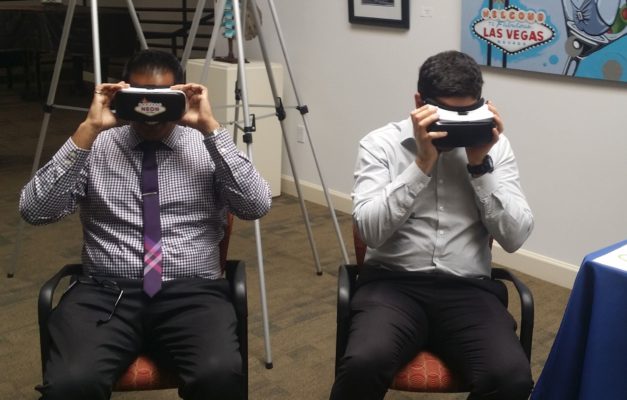Don’t Confuse Technology with Valuable Application of Technology
The first time I tried virtual reality, I didn’t get it. It wasn’t ‘true’ VR- it was simply a 360 video render with the the camera flying through the air- but it was enough of an experience that I understood the technology. The problem was, I didn’t understand the application. Why would someone want to look around at a project when the out-of-body experience felt so weird? When you looked down there was no body, no vehicle, no platform that should be there holding up the camera (eyes). It also made me slightly nauseous.
But while it was disconcerting, it was just a brief demo and a powerful demonstration of what could be possible with the interactive 3D model we were developing. That moment was important for myself and the future of Civil FX in a way that I didn’t fully understand in the moment.
What the demo was lacking was application. After some thought, I bought a cheap helicopter with cockpit interior on TurboSquid. We placed the camera in the passengers seat of the cockpit and re-rendered. This time, the experience was significantly improved because it made sense. Our clients loved it and after a few more improvements including animating the propeller, adding a pilot and including sound, this passive virtual helicopter tour was powerful enough that the client bought multiple Gear VR devices (plus Samsung phones) to make it a permanent part of the project office. These interactive helicopter tours have been experienced thousands of times as a unique way to view a proposed project that hasn’t yet been built.
You can experience it for yourself here.
Technology is advancing at a rapid rate that perhaps no one fully understands. Those clunky Gear VR + phone setups are several iterations old and that was only 3 years ago. The hodgepodge of plugins and custom code that we needed to make the experience work are available as standard features of most commercially available game engines. Some of our cutting edge features of a year ago now seem outdated- a testament to both the advances in technology and our own innovation. The AR vision I had from 8 years ago can be realized by a novice in their bedroom in a weekend.
This isn’t going to stop. Our current and upcoming innovations and features will be quickly surpassed and possibly even made irrelevant in short order. Insane 4k graphics with HDR of today will be surpassed by 8k or 16k with twilight sparkle (or whatever the next thing is) of tomorrow. Millions of dollars of the latest visual FX to bring deceased actors to life in 2015 have been surpassed by algorithms of 2019.
But do you know what isn’t irrelevant? Those virtual helicopter tours that clients are still asking us for. Or photo composited renders that have been a standard in the industry for decades. Or the construction phasing animation we still develop for contractors that still help them win multi-million dollar contracts.
This is because these are all applications of technology that add value to projects and clients. Yes, the quality of these applications will continue to improve. Yes, the ease to develop will continue to increase. Yes, there will even be new applications of new technology like the interactive visualization upon which we’ve built Civil FX.
But I’m seeing too often that many are confusing technology and application. Everyone is offering ‘virtual reality’ or ‘augmented reality’ but what does that even mean? If I’m a client, I shouldn’t care about what VR or AR you can offer but instead care about the benefits it will bring to my project and the return on investment I’ll see. Everyone is offering VR and AR because everyone can offer VR and AR. There is simply no barrier to entry anymore. But if there isn’t a valuable application of VR, AR, MR or any other technology, why do I need it?
In another example, if you have a drone and are offering it as a service I hope you have specific niche or a meaningful application because everyone has a drone now. Simply having a drone isn’t going to get you contracts like it perhaps could have 5 years ago.
This all reminds me of 20 years ago when the Internet was still fairly new. In 1997 telling customers that your business had a web page probably set you apart from the competition but if you were still boasting that your company had a web page in 2007, you had kind of missed the boat. If instead in 2007 you were touting how your website could help your customers find the right product at the right price and have it shipped to them in a few days, your application of technology was probably adding tremendous value. The same was true of mobile apps 10 years ago- then it set you apart, now you are literally one in a million.
The advances in technology are incredibly exciting. If today’s augmented reality is as promising as it is now, I can’t imagine where it will be in a decade. If the real-time game engines were are using today have as many standard features as they do now, what will they look like in the future? It’s difficult to even fathom.
However, as amazing as the technological improvements will continue to be, simply riding the innovation won’t be enough. We all have to actively look for valuable application of each new advance or we risk the chance of getting left behind. I’m well aware that Civil FX is as much at risk of falling into this trap as any other company. We talk internally about valuable application of technology often.
As amazing as our team is, if we can’t look past the technology to the benefits for our clients, we will quickly become irrelevant.


